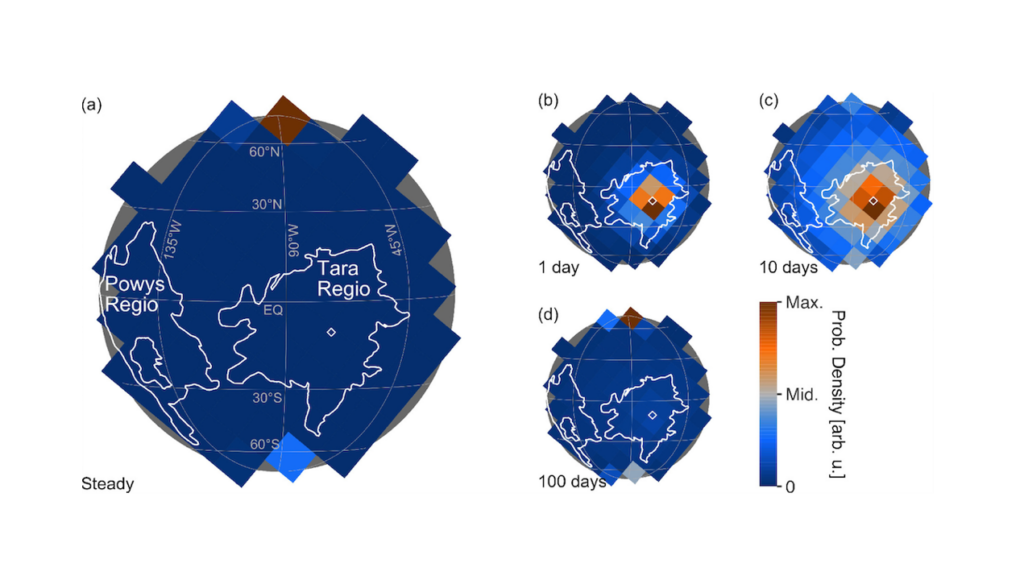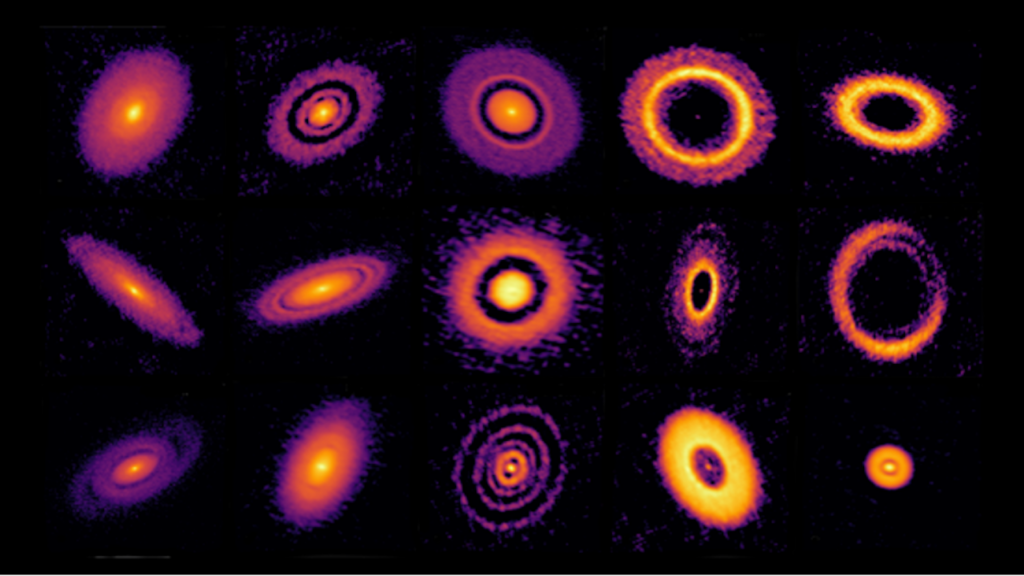Millimeter Wave Sspectrum And Search For Vinyl Isocyanate Toward Sgr B2(N) With ALMA

The interstellar detections of isocyanic acid, methyl isocyanate, and very recently also ethyl isocyanate, open the question of the possible detection of vinyl isocyanate in the interstellar medium.
The aim of this study is to extend the laboratory rotational spectrum of vinyl isocyanate into the millimeter wave region and to undertake a check for its presence in the high-mass star forming region Sgr B2. The rotational spectrum of vinyl isocyanate was recorded in the frequency regions 127.5-218 and 285-330 GHz using the Prague millimeter wave spectrometer. The spectral analysis was supported by high-level quantum-chemical calculations.
We assumed local thermodynamic equilibrium to compute synthetic spectra of vinyl isocyanate and to search for it in the ReMoCA survey performed with ALMA toward Sgr B2(N). We also searched for ethyl isocyanate in the same source. Accurate values for the rotational and centrifugal distortion constants are reported for the ground vibrational states of trans and cis vinyl isocyanate.
We report nondetections of vinyl and ethyl isocyanate toward the main hot core of Sgr B2(N). We find that vinyl and ethyl isocyanate are at least 11 and 3 times less abundant than methyl isocyanate in this source, respectively. Although the precise formation mechanism of interstellar methyl isocyanate itself remains uncertain, we infer from existing astrochemical models that our observational upper limit for the CH3NCO:C2H5NCO ratio in Sgr B2(N) is consistent with ethyl isocyanate being formed on dust grains via the abstraction or photodissociation of an H atom from methyl isocyanate, followed by the addition of a methyl radical.
The dominance of such a process for ethyl isocyanate production, combined with the absence of an analogous mechanism for vinyl isocyanate, would indicate that the ratio C2H3NCO:C2H5NCO should be rather less than unity.
K. Vávra, L. Kolesniková, A. Belloche, R. T. Garrod, J. Koucký, T. Uhlíková, K. Luková, J.-C. Guillemin, P. Kania, H. S. P. Müller, K. M. Menten, Š. Urban
Comments: Accepted for publication in A&A
Subjects: Astrophysics of Galaxies (astro-ph.GA)
Cite as: arXiv:2207.03417 [astro-ph.GA] (or arXiv:2207.03417v1 [astro-ph.GA] for this version)
https://doi.org/10.48550/arXiv.2207.03417
Focus to learn more
Submission history
From: Lucie Kolesnikova
[v1] Thu, 7 Jul 2022 16:39:48 UTC (645 KB)
https://arxiv.org/abs/2207.03417
Astrobiology, Astrochemistry



![Measuring Interstellar Carbon Abundance via 158 um [CII] Absorption with SOFIA](https://astrobiology.com/wp-content/uploads/2025/05/Measuring-Interstellar-Carbon-Abundance-1024x575.png)




